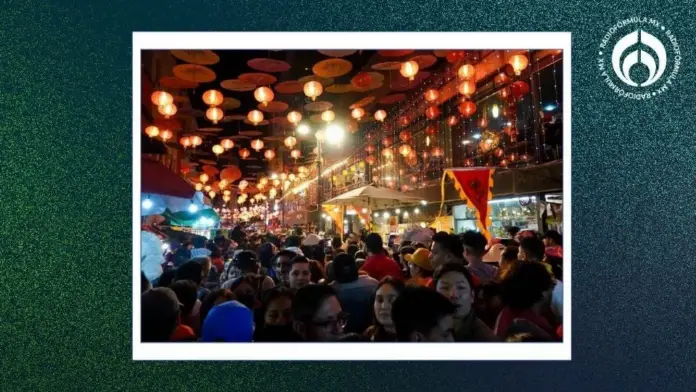
Mexico has become a destination for people from various countries and the Chinese community has grown for those seeking work, a future or even more freedom.
It is no longer just about passing through Mexican territory to the United States, thousands of Chinese were detained at the northern border last year, but many have chosen to stay in Mexico.
From January to June 2024 alone, 6,340 temporary and permanent residents from China were registered, both those who received their immigration document for the first time or who renewed their immigration document, according to data from the Migration Policy, Registration and Identity of Persons Unit of the Ministry of the Interior.
For its part, the AP news agency reported that Mexico issued 5,070 temporary residence visas to Chinese immigrants last year, a figure that doubles those issued during 2022, and is only behind the documents issued to Americans and Colombians.
What is the appeal of Mexico for Chinese citizens?
Mexico is attractive to Chinese people because there are families from that country who have come to the nation and because of the multinational companies from the Asian giant that have established themselves in Mexico to be close to the American market.
“Many Chinese people started coming here two years ago, and these people need to eat,” Duan Fan, owner of a restaurant in Roma Sur, told AP.
Duan, who serves food from Sichuan province in his restaurant, arrived in Mexico City in 2017 to work with an uncle who has a wholesale business in Tepito, and later his parents also arrived.
Meanwhile, Li Daijing, a 30-year-old woman, had a paid job in the technology sector, but since last year she moved to the Mexican capital, where she seeks to start a business importing furniture from her nation.
Dong Shengli, 33, told AP that she moved to Mexico City from Beijing a few months ago to help friends manage a store in the center.
Dong, who now works at a wholesaler that imports knockoff shoes and clothing, had worked at China’s National Energy Commission. While he is interested in staying in Mexico, his wife and family are in his home country.
Meanwhile, Tan, 50, who gave only his last name, moved to Mexico in search of greater freedom, because he resents the repressive environment in his country.
“It’s not just about oppression in the workplace, but about the mentality. I can feel the political regression, the retreat of freedom and democracy. The implications of that really make people feel twisted and sick,” he told AP. In contrast, the protests in Mexico City are a sign of the freedom of expression he yearns for.
Viaducto Piedad, Mexico’s true Chinatown
The middle-class neighborhood of Viaducto Piedad, in Mexico City, has been home to a Chinese community since the 1990s and is considered by the Chinese themselves to be the true Chinatown of the country, as there are businesses, spaces for religious events and children’s recreation.
They also have beauty salons, restaurants and stores for Chinese consumption, and the schools in the area have a significant presence of people from the Asian giant.
Businessmen from that country have opened new wholesale businesses in the Historic Center of Mexico City and occupied large buildings, such as the recently reopened Plaza Izazaga 89.
The newspaper Reforma reported last July that there are four macroplazas and dozens of small supermarkets that are installed in a one-square-kilometer area, which intend to control commerce in the Center of Mexico City:
Izazaga 89: they closed it in July and reopened it at the end of August. Previously it had 16 floors with 46 shops per floor.
Plaza Izazaga 38: is 400 meters from the one that was reopened, has 12 floors and each one is full of shops.
Izazaga 151: its size is smaller than the previous ones, as it only has 5 floors.
Flamencos 9: is located 350 meters from the previous one and is known as “Llamas”.
In past years, people came from Guangdong, in southern China, and now, due to the arrival of companies from the Asian giant, they are coming from the east, who have greater global experience, according to Andrei Guerrero, coordinator of the China-Baja California Studies Center.
The Chinese car manufacturer BYD has plans to set up a factory in Mexico, where the city of Guadalajara, Jalisco, is mentioned as one of the possible headquarters for the automaker.
Source: radioformula






